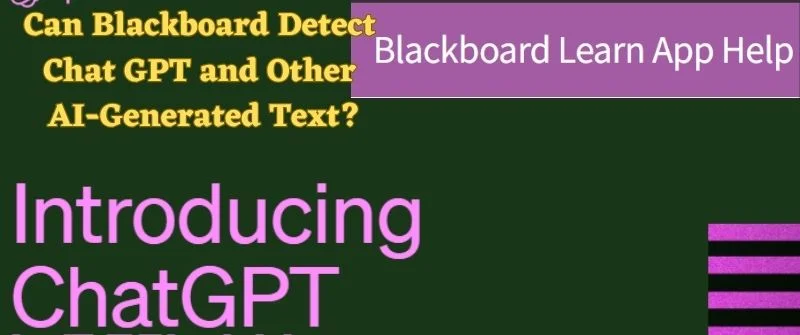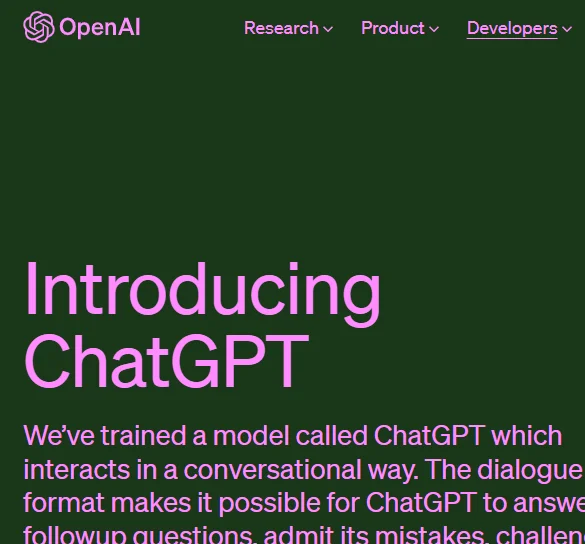Can Blackboard Detect Chat GPT and Other AI-Generated Text?

Blackboard is a well-known online learning management system that educational institutions widely rely on to improve student communication and overall course administration.
On the other hand, Chat GPT is a sophisticated language model that OpenAI built. It is capable of generating responses in natural language conversations that are human-like. Is it possible for Blackboard to identify Chat GPT?
In this article, we will investigate the capabilities of Blackboard in recognizing or differentiating interactions with Chat GPT.
We will do so by considering the unique qualities shared by both platforms and the difficulties associated with determining whether or not responses are automated within an educational setting.
Can Blackboard Detect Chat GPT?

The nature of Chat GPT creates a distinct set of challenges, even though it is essential to monitor and identify information that is unsuitable.
We do so to keep a learning environment that is both secure and productive.
First, Chat GPT can generate highly similar responses to human language. Remarkably, this makes it challenging to differentiate between automated and genuine encounters.
Additionally, the rapid developments in language models such as Chat GPT make it difficult for detection algorithms to stay up with new patterns and strategies. This is a challenge for the industry.
Most current detection approaches rely on pattern recognition and keyword-based filtering, which may not accurately identify complex examples of Chat GPT usage.
Consequently, the limits of these detection approaches bring to light the requirement for continual research and development to improve Blackboard’s capability to recognize and respond to interactions when using Chat GPT.
People Also Read: Buy a Tok Essay: TOK Essay writing service – No Plagiarism
Understanding Blackboard and Chat GPT
In the realm of online education, Blackboard is an online learning management system. Its purpose is to make communication, collaboration, and the management of courses easier.
Typically, it acts as a centralized platform where students and teachers can access course materials, participate in conversations, submit assignments, and receive feedback on their work.
Conversely, Chat GPT is an advanced language model that OpenAI developed. It is programmed to generate human-like responses when conversing using normal language.
Chat GPT is useful in various sectors, including online learning platforms, because it can grasp the context, infer meaning, and offer logical responses.
Regarding improving student engagement and providing help through online learning, Chat GPT has the potential to play a critical role. It can provide individualized guidance, respond to questions, and simulate dialogues to facilitate interactive learning experiences.
However, it is essential to remember that Chat GPT is an AI model. As such, it might have some restrictions when it comes to comprehending complicated topic matters or providing correct domain-specific information.
Techniques Used by Blackboard for Detection
1. AI-based Keyword Filtering and Pattern Matching
Normally, Blackboard works by using AI-based approaches such as keyword filtering and pattern matching.

Discovering specific words or phrases that may suggest inappropriate or illegal information is called keyword filtering.
The Blackboard system flags and removes inappropriate material by reading through messages, discussion boards, and other interactions.
On the other hand, pattern matching includes evaluating the structure and context of the interactions to uncover patterns that may suggest automated or programmed responses.
These patterns can then be compared to known patterns of automated or scripted responses.
By implementing these strategies, blackboard aims to provide a safe and secure online learning environment. Such measures will identify and deal with inappropriate or unauthorized interactions immediately.
2. Natural Language Processing (NLP) Algorithms
Blackboard uses algorithms based on natural language processing (NLP) as a component of its detection methods.
Using NLP algorithms allows the system to do more complex analysis and comprehend the content of messages and conversations.
Blackboard can discover content that may be unsuitable or problematic by using algorithms that can analyze the context, sentiment, and meaning of the text.
Also, Blackboard can identify trends that may suggest violations of guidelines or policies by employing natural language processing (NLP), which helps keep the online learning environment courteous and secure.
The application of NLP algorithms improves the accuracy and efficacy of content identification, which enables Blackboard to proactively handle possible problems and ensure that all users have a positive experience learning.
3. Machine Learning Models for Content Analysis
Blackboard uses machine learning models to do content analysis as one of its detection methods. These models have been trained on massive datasets to assess and classify text-based information automatically.
The Blackboard system uses machine learning to recognize patterns and features connected with inappropriate or unlawful information.
The models can gain knowledge from previous events and steadily increase their precision over time.
Most importantly, this makes it possible for Blackboard to properly recognize and flag any problematic interactions, which helps ensure the learning environment is safe and secure.
Blackboard can manage a massive volume of user-generated material while maintaining high detection accuracy because of the utilization of machine learning models, improving content analysis’s effectiveness and scalability.
People Also Read: Issues of AI in Education: Preventing students from Using AI
Blackboard’s Efforts in Promoting Safe Learning Environments
1. Collaborations with researchers and experts in AI and education

Blackboard works with researchers and industry professionals in artificial intelligence (AI) and education because it values the necessity of fostering secure learning environments.
Due to forming partnerships with these specialists, blackboard can gather significant insights and knowledge in developing successful methods and technologies to enhance safety inside its platform.
These relationships encourage continual research and innovation, which ultimately results in the development of sophisticated detection techniques and methodologies.
Blackboard delivers a safe and supportive environment for online learning by remaining at the forefront of artificial intelligence (AI) and education research. This helps to ensure the health and success of Blackboard’s users.
2. Constant Monitoring and Improvement of Detection Algorithms
Blackboard fosters the development of secure educational environments by continually monitoring and enhancing its detection algorithms.
The accuracy of the platform’s algorithms in determining whether or not the information is unsuitable is scanned regularly, and attempts are taken to improve their performance.
Blackboard finds areas for improvement through rigorous testing and analysis, then iteratively refines its detection algorithms to address those identified areas.
Also, Blackboard guarantees that its detection algorithms are up to date and able to identify and solve any difficulties by remaining proactive and responsive to developing challenges.
Finally, this keeps the algorithms equipped to recognize and handle potential problems.
Blackboard is committed to creating a safe and encouraging environment for its users to engage in online learning, and its commitment to continual development illustrates that dedication.
3. User Education and Awareness Initiatives to Encourage Responsible Usage
Blackboard is aware of the significance of user education and awareness in fostering the development of secure educational settings.
Initiatives are often put into motion on the network to promote more responsible behavior among its members.
These programs include raising awareness about the possible hazards and consequences of incorrect behaviors and promoting digital citizenship by giving guidelines and tools for safe online behavior.
Blackboard aims to cultivate a pleasant and welcoming atmosphere for academic pursuits by informing users about the significance of ethical and courteous behavior while using the platform.
Blackboard users are given the ability to make well-informed decisions, accept responsibility for their actions, and contribute to an online community that is both secure and supportive as a result of these efforts.
Conclusion
Due to the language model’s inherent capacity to generate human-like responses, Blackboard cannot recognize Chat GPT interactions as easily as it would like.
Most current detection approaches are predicated on pattern recognition and keyword filtering, which may need help recognizing more sophisticated examples of Chat GPT usage.
In order to keep the learning environment risk-free and secure, it is necessary to constantly monitor and search for anything improper.
However, due to the limitations of existing detection algorithms, continual research and development are required to improve Blackboard’s capability to recognize and respond to interactions utilizing Chat GPT.

Josh Jasen or JJ as we fondly call him, is a senior academic editor at Grade Bees in charge of the writing department. When not managing complex essays and academic writing tasks, Josh is busy advising students on how to pass assignments. In his spare time, he loves playing football or walking with his dog around the park.




